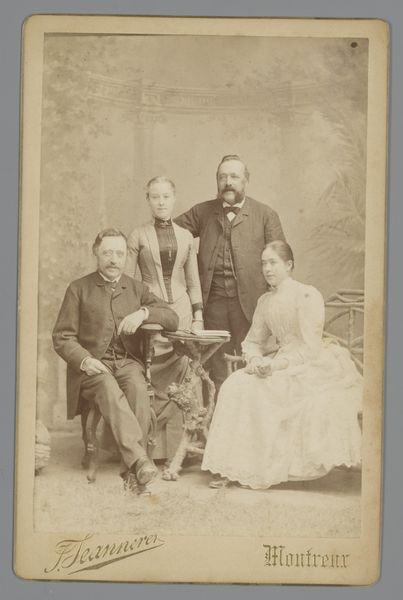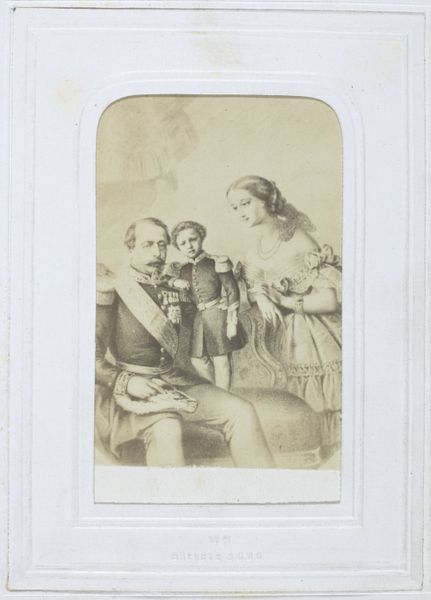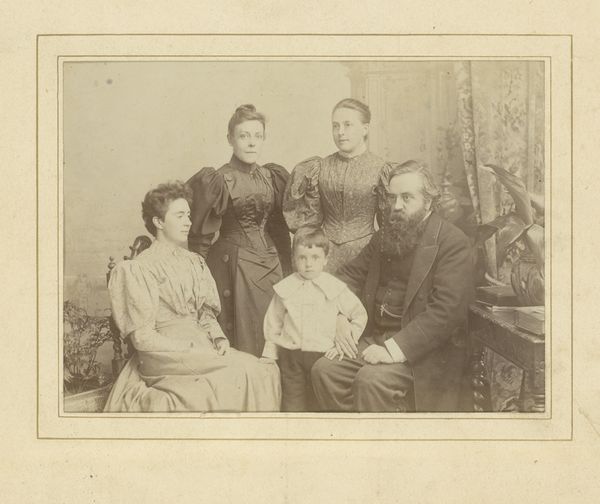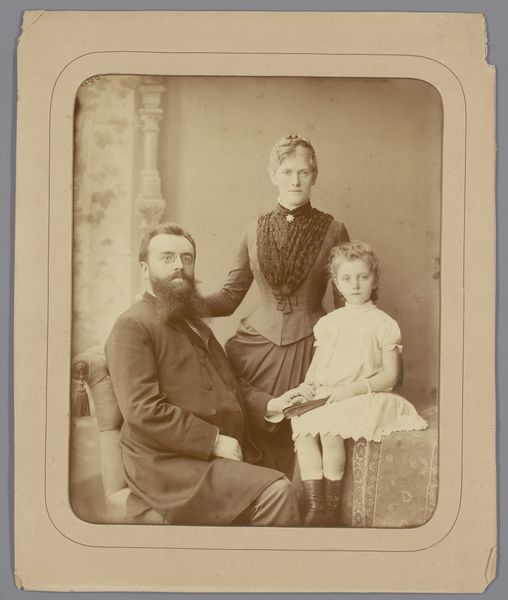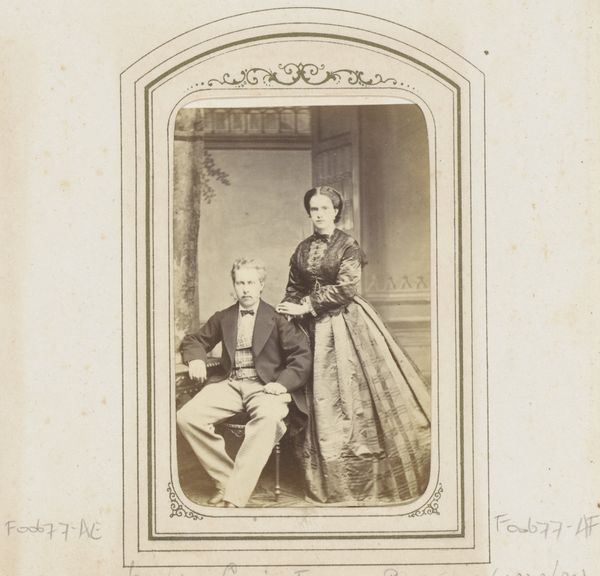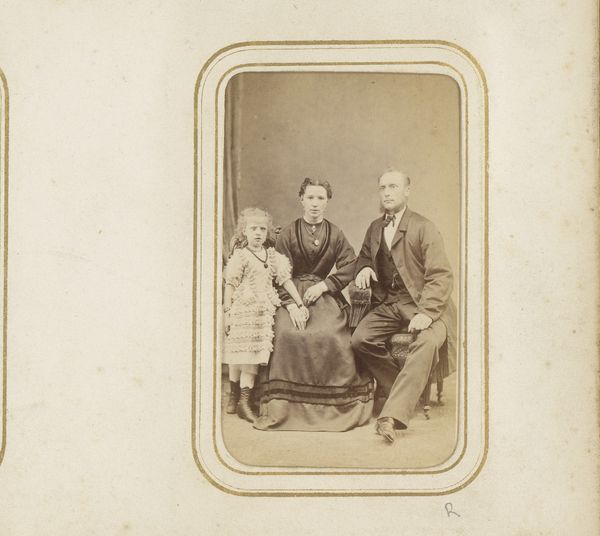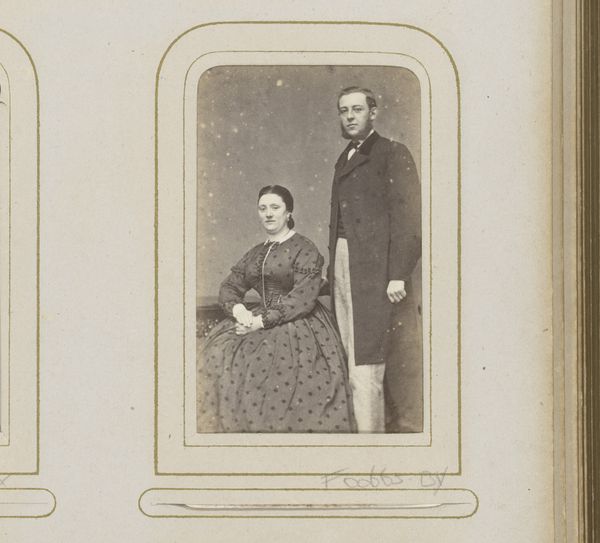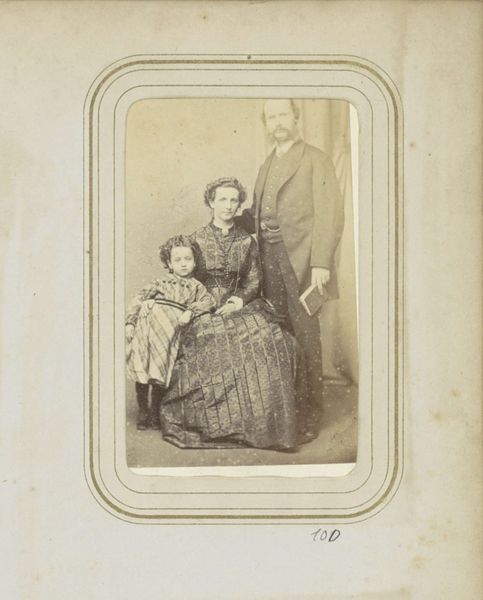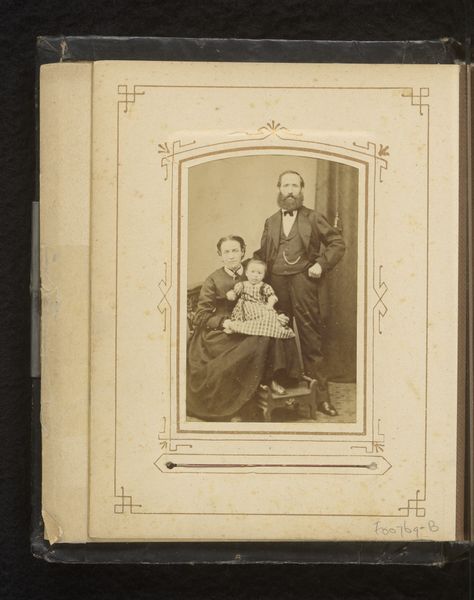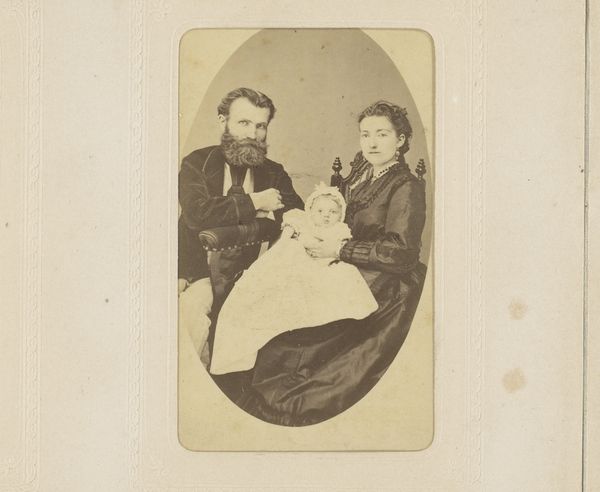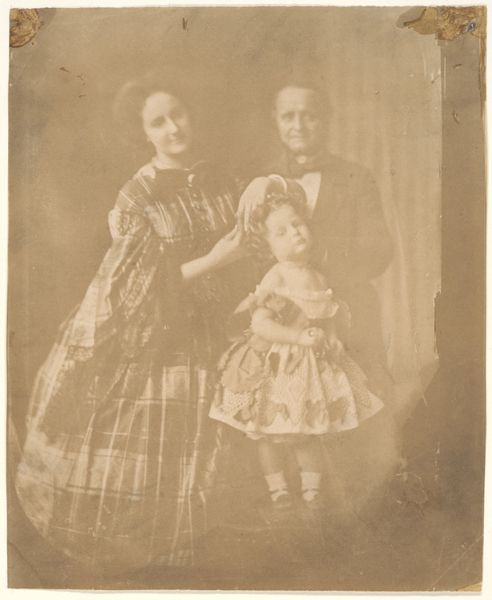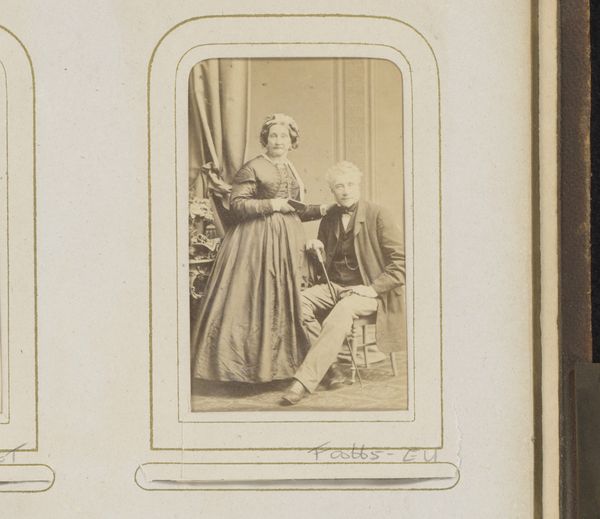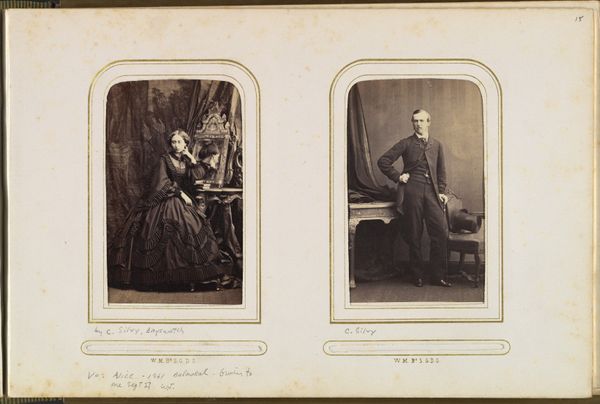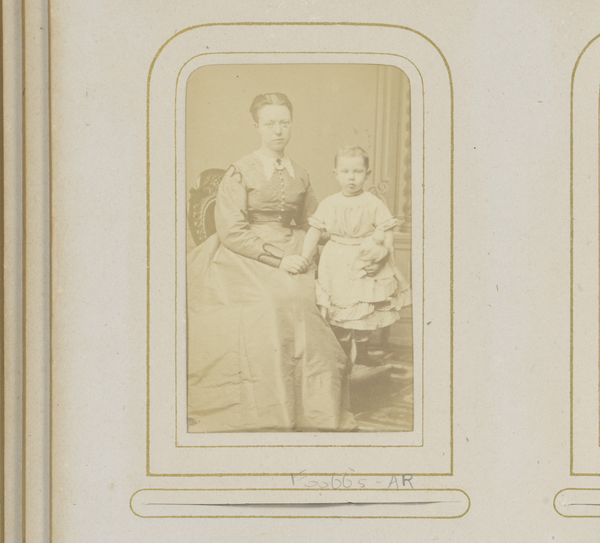
Lieutenant General Thomas J. Jackson and His Family ("Stonewall Jackson") 1866
0:00
0:00
drawing, print, photography
#
portrait
#
drawing
# print
#
charcoal drawing
#
photography
#
child
#
19th century
#
men
#
history-painting
Dimensions: Image: 13 7/8 × 19 1/16 in. (35.2 × 48.4 cm) Sheet: 18 15/16 × 23 5/8 in. (48.1 × 60 cm)
Copyright: Public Domain
Curator: This somber yet meticulously rendered print is entitled "Lieutenant General Thomas J. Jackson and His Family," created in 1866 by William Sartain. It resides here at the Metropolitan Museum. What are your immediate impressions? Editor: Austere. There is a stillness, a posed formality that almost feels…funereal, despite the presence of the child. It projects this 19th century sense of idealized and constrained domesticity. Curator: Observe how the artist constructs the scene. The subjects are arranged along a horizontal axis. The table creates a firm line dividing the composition, reinforced by the alignment of the busts on the wall behind them, further structuring the family portrait into rigid geometric forms. Editor: Yes, there is that feeling again; of objects frozen in time. Beyond the clear Civil War context of memorializing Stonewall Jackson, those busts above them – historical figures now themselves icons - create an explicit alignment of Jackson with a certain heroic lineage. The artist attempts to portray the figure in an honorific manner through careful symbol deployment. Curator: It's the printmaking technique—engraving—combined with charcoal drawing—that contributes greatly to the formal impact of this work, wouldn't you agree? Look closely at the cross-hatching that builds the tonality and defines each figure, almost sculpting their forms from darkness. Editor: Absolutely. It enhances this sense of enduring gravity and emphasizes a need to evoke both Jackson's military fame and his role as husband and father. But the faces – particularly Mrs. Jackson's – project something more than serenity, perhaps an uneasy melancholy. I wonder how her contemporaries understood that contrast, given her husband's recent death in 1863? Curator: Context deeply enriches how we view art. Consider how those historical implications combine with sartorial and domestic choices to create a work which oscillates between public commemoration and private grief. This interplay produces what might be best regarded as a meditation on memory and representation. Editor: Yes, that tension between intimate family portrait and formal public iconography speaks to the complexity of historical memory, as it lives in objects such as this image.
Comments
No comments
Be the first to comment and join the conversation on the ultimate creative platform.

